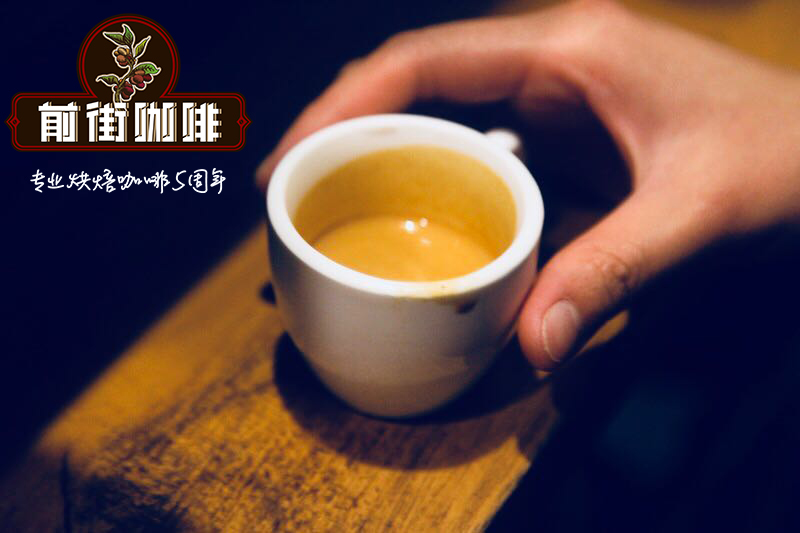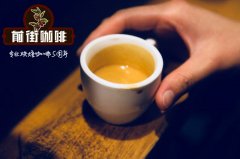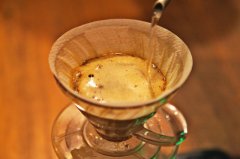Introduction of Micro-batch Peruvian Fine Coffee made by Geisha in Vera Rika Manor, Peru

Professional coffee knowledge exchange More coffee bean information Please pay attention to coffee workshop (Weixin Official Accounts cafe_style)
Peru Vera Ricca Manor Geisha Wash Micro Batch
Peru is dominated by small farmers, each with less than two hectares of land, producing about 3000 pounds of coffee per hectare. Organic cultivation in Peru has a long history and is quite common. However, in recent years, due to climate change, coffee leaf rust has spread one after another in various countries, because organic cultivation has also caused a large reduction in Peruvian coffee production. Peruvian coffee is grown in tree-lined areas at high altitudes, mainly Arabica varieties. As the beans mature, the density of the beans is higher and the flavor varies considerably. Among them, the highest altitude, Peru's most important coffee producing area is: Chacha Ma You Chanchamayo, located in the central highlands on the east side of the Andes Mountains. The Amazonas and San Martín are next, in the northern highlands east of the Andes.
Taste analysis
Delightful flavours of frangipani, blueberry, peach, bergamot, lemon peel and coffee blossom
Delicate and elegant, making people want to taste the charming aroma again
Villa Rica is a thriving and busy town in the eastern Andes. It has a large area of rich ecological protection forest and is also a well-known bird sanctuary. It is amazing to find that 400 bird species have been recorded in Villa Rica! It can be seen that Vera Ricca is a coffee producing area very friendly to the natural environment ~ coffee planting altitude of about 1500m, annual average temperature of 20 degrees, annual rainfall of about 1800 mm, excellent planting conditions, very suitable for the growth of coffee trees! Farmers adopt organic compost cultivation, mainly Typica(iron pica), the quality of raw beans is extremely stable, from April to September every year, the harvest period lasts until September, the raw beans are washed and fermented after harvest, and the beans are naturally dried in the sun. The coffee produced in Villa Rica has a special creamy nut aroma, which tastes warm and soft, and has good sweetness. The slightly rising fruit acid in the later stage can bring a comfortable sweet taste ~
Shade planting and regional traditions:
The planting area is planted with a fruit tree called "INGA", commonly known locally as Pacay, which provides good shade and bird feeding during flowering season.
Small farmers organize production cooperatives and weave a complete marketing mechanism for raw beans.
Almost every farm has perfect green bean processing equipment to facilitate the best processing time after harvesting coffee cherries.
Cooperatives provide re-refining and grading screening, complete packaging of coffee beans and direct export to buyers in various countries, effectively striving for the storage efficiency of green beans and avoiding centralized transportation. The possible improper storage conditions after arrival at the port of Lima, the capital city, lead to the deterioration of the quality of raw beans.
The cooperative has long been linked to international coffee organizations and is committed to fair trade and organic cultivation. Villa Rica is currently the second largest organic fair trade coffee in the world. The producing area.
The farm carries out systematic seedling replacement at the optimum fruiting age of coffee trees to maintain high quality coffee trade.
The pulp and fermented organic waste water left in the process of coffee cherry treatment are effectively utilized for organic composting and then used for planting in a virtuous cycle.
Important Notice :
前街咖啡 FrontStreet Coffee has moved to new addredd:
FrontStreet Coffee Address: 315,Donghua East Road,GuangZhou
Tel:020 38364473
- Prev

Introduction of Peruvian Fine Coffee made by Huang Cadura in Vera Rica Manor, Peru
Professional coffee knowledge exchange more coffee bean information please pay attention to the coffee workshop (Wechat official account cafe_style) Peruvian Pasco Osapomba Vera Rica Manor Huang Cadura seed sun treatment flavor description: sweet and solid wine, mango, peach, passion fruit, red heart ballet dried aroma. The entrance is full of intoxicating aromas of wine, berries, peaches and rum.
- Next

Introduction to the characteristics of Sidamo Coffee letter from Bonbe Village Higai processing Factory in Bombe Village, Xidamo production area
Professional coffee knowledge exchange more coffee bean information please pay attention to the coffee workshop (Wechat official account cafe_style) Cedamo can also be said to be the birthplace of the sun bean treatment, generally good sun also comes from Sidamo. The Xigai processing plant is located in the village of Bonbe Village in the Sidamo region of southern Ethiopia. The altitude is about 1900 2100 meters.
Related
- Detailed explanation of Jadeite planting Land in Panamanian Jadeite Manor introduction to the grading system of Jadeite competitive bidding, Red bid, Green bid and Rose Summer
- Story of Coffee planting in Brenka region of Costa Rica Stonehenge Manor anaerobic heavy honey treatment of flavor mouth
- What's on the barrel of Blue Mountain Coffee beans?
- Can American coffee also pull flowers? How to use hot American style to pull out a good-looking pattern?
- Can you make a cold extract with coffee beans? What is the right proportion for cold-extracted coffee formula?
- Indonesian PWN Gold Mandrine Coffee Origin Features Flavor How to Chong? Mandolin coffee is American.
- A brief introduction to the flavor characteristics of Brazilian yellow bourbon coffee beans
- What is the effect of different water quality on the flavor of cold-extracted coffee? What kind of water is best for brewing coffee?
- Why do you think of Rose Summer whenever you mention Panamanian coffee?
- Introduction to the characteristics of authentic blue mountain coffee bean producing areas? What is the CIB Coffee Authority in Jamaica?

